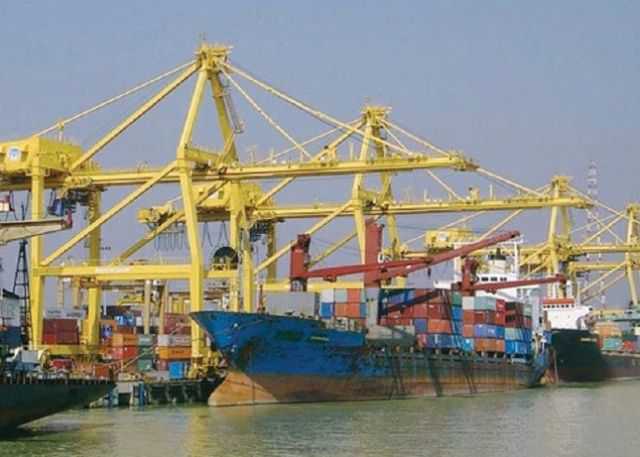Bangladesh ports explore link to India

Image collected
Michael Mackey investigates the impact of a new deal for Indian goods to transit through ports in Bangladesh.
India and neighbour Bangladesh have signed an MOU for goods for North East India transit via Bangladesh’s ports – a small but significant opening up of both Bangladesh’s ports and the broader economic relationship between the two countries.
“The Leaders welcomed the conclusion of Standard Operating Procedures (SOP) for the use of Chattogram and Mongla ports for movement of goods to and from India, particularly to and from the North East of India, which could create a win-win situation for both economies,” Bangladesh’s Ministry of Foreign Affairs said in a statement issued for the summit between Bangladeshi Prime Minister Sheikh Hasina and her Indian opposite number, Narendra Modi.
Chattogram is the new name for Chittagong, Bangladesh’s principal port although it is not the area around it, but further afield, that will be served. “The real purpose is to allow Indian cargo through Bangladesh to India’s North-East provinces,” Jason Chiang, Director with Ocean Shipping Consultants told Port Strategy in an interview. “It has always been an issue for them.”
These provinces (sometimes dubbed the “Seven Sisters”) are somewhat isolated geographically and connect to the rest of India via the ‘chicken’s neck,’ a long thin North-South strip with Nepal at the top and Bangladesh on one side.
Poor infrastructure makes moving goods along its length time-consuming and costly. However, allowing use of a port and then through Bangladesh, makes it so much cheaper and practical.
Chiang sees the goods that moved along these trade lanes as being essentially fast-moving consumer goods and household items. “This is to cater for the population that resides there,” he stated.
Outgoing goods, according to local media reports are likely to be agricultural products and jute, although India is very much an importing country especially the poorer Northern regions.
The significance of the new SOP process is to outlines how goods are to be moved, as well as which routes they can move along and within what time span, although one problem that will seemingly remain is the problematic bureaucratic activities.
For example, the Customs Transit Declaration needs to be filed five times with copies to be submitted when exiting India, entering and exiting the Bangladeshi port and when crossing the Bangladesh-India border. One upside is that at least it is a computerised process.
The other great problem is the strained nature of the ports the MOU covers. Chattogram might be Bangladesh’s gateway port but it is, according to Victor Wai, Consultant with Ocean Shipping Consultants, “heavily congested.”
This is because Chattogram dispatches Bangladesh’s booming textile exports but also takes in all the raw materials it needs. In addition is the issue of land side congestion. Mongla, the other port the SOP covers, is less likely to be impacted. It takes less than 10% of Bangladesh’s imports as Wai points out and serves mainly the area around Khulna.
One major concern remains congestion, with clearing customs a long and often painful four-day experience. Longer-term, there are known plans to increase capacity across
Bangladesh’s port sector.
For example, Chattogram is looking at having a Bay Terminal operational by 2023, said Wai, with a planned draft of 12m and increased capacity. Payra, is still Master planning its expansion. So, shorter-term, little improvement is expected.
What is intriguing, however, is that the terms of the SOP reads like the start of a longer process of what could be ongoing reforms rather than its end. Both Sheikh Hasina and Prime Minister Modi “welcomed the decision to operationalise the Dhulian-Gadagari-Rajshahi-Daulatdia-Aricha Route (to and from) and include Daudkandi-Sonamura Route (to and from) under Protocol on Inland Water Transit and Trade,” according to Bangladeshi Foreign Ministry statement.
The pair also underlined the immense potential of movement of cargo using the inland water and coastal shipping trade, it added.
Already there is some information that, potentially, could generate possible benefits to both economies of Bangladesh and India from greater use of access to their neighbours ports for transhipment of their respective export cargoes.
Plus, on another positive note, the two governments have agreed to expedite discussions on requisite modalities.
Source: https://www.portstrategy.com
Tags :
Previous Story
- Satya Nadella shreds India’s citizenship act with a...
- High Commission of India, Bangladesh Job Circular 2020
- India approves third moon mission, months after landing...
- Bangladeshi migrants prefer Italy, France or the US,...
- Trial run of Indian ships using Bangladeshi ports...
- UGC plans new syllabus to help get foreign...
- Inconvenient downpours hit India's mid year crops, postpone...
- Participation jumps by 57% at Bangladesh Denim Expo